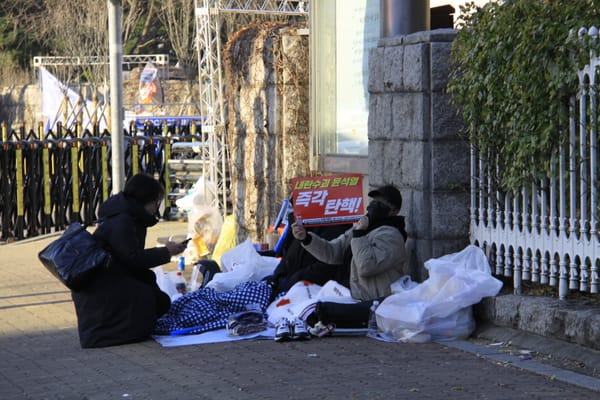Asia Undercovered Media Analysis #1: Miscovering Chinese Apps
Media Analysis: How western media undercovered the rise of Chinese apps – and still gets it wrong today
To ban, or not to ban, TikTok. This debate, on the popular Chinese streaming video app, is dominating United States tech media now. But go back just a year to 2019, and you’ll find that coverage of Chinese apps, like TikTok, but also WeChat, UC Browser, Alipay, was basically non-existent. This is despite their parent companies – Tencent, Alibaba, Bytedance, Baidu – were already among the most wealthy tech companies in the world.
Moreover, it has been some time that these apps became popular outside of China. In 2019, 44 of the top 100 downloaded apps in India were Chinese, with Chinese apps also making inroads in Brazil, Indonesia, and Pakistan. TikTok, though, did something that few (at least in the west) had thought possible for a Chinese app – break into the North American market, and become one of the most downloaded apps on both Google Play and Apple’s App Store in the US. Yet, go back to 2019, and most the stories about TikTok do nearly no digging into the more worrying aspects of Chinese platforms – namely, the mandated censorship, vast data collection, and high level of state interference.
The fact that Chinese apps were censoring content even outside China’s borders was no surprise...unless your source was mainstream tech media outlets like Vice, Mashable, Wired, The Verge or others. Prior to 2019, these outlets gave barely any attention to Chinese apps or tech giants. For examples, here’s how many stories outlets ran on TikTok as compared to Facebook last year.

(Estimates derived from public searches on publication websites of articles focused on TikTok or Facebook)
Searching for pieces on WeChat, Weibo, Alipay or other apps? Good luck. They remain undercovered.
Some blame should go to the human rights and privacy non-profit sector, which also mostly ignored China. Look at the blog for the non-profit Electronic Frontier Foundation – not even one piece about Chinese technology, surveillance, or censorship in all of 2017 or 2018! That compares to more than a dozen posts about Facebook, or GDPR in Europe. This is, mind you, when evidence of the Xinjiang police state was breaking – apparently not of interest to a group that claims to be “the leading nonprofit organization defending civil liberties in the digital world.”
As I am sure many journalists based in Asia can tell you, until recently, placing stories in western media outlets about Chinese apps – or technology in Asia – was challenging. In 2018 and 2019, I pitched pieces about WeChat censorship, TikTok, and the increasing creep of other Chinese tech companies (including those who used Xinjiang as a test lab for invasive surveillance), and got little interest. It was hip to attack Facebook and Google, but with rare exceptions (shout-out to Engadget), Chinese apps weren’t interesting or newsworthy enough.
Only in the past few months has TikTok finally become a political issue in the US. And the lack of reporting, or knowledge about the scale of censorship means that it is politics, pundits, and influencors who are driving the discussions about the app. The fact that it and its sister app, Douyin, has, for years, censored Uyghurs, suspiciously ignored the Hong Kong protests, suppressed posts by ugly/poor people, and has close ties to the Chinese Communist Party is somehow not part of the debate.
This had led to, today, some atrocious takes, including a lot of false equivalences.
(The two authors are both New York City-based, with no experience at all in Asia, or reporting on Chinese platforms)
(Written by New York based reporter who has one China story in his entire portfolio)
And here’s a critique of a particularly badly sourced piece in The Atlantic written by a journalist on the other side of the world (DC, not New York, so I guess diversity). Why not commission an Asian, or Asia-based journalist to write a better story instead? Someone who focuses on Chinese technology perhaps?
Local media outlets and Asia-based journalists have done a far better job, yet their stories, or voices, get less attention in the US, as publications repeatedly choose to publish pieces by New York and D.C journalists, some of whom have never covered China or Chinese authoritarian tech.
Here’s quality reporting from 2017-2018 that informed the debate about Chinese technology (many of which were featured in Asia Undercovered).
- 2017 – This Is What A 21st-Century Police State Really Looks Like (Buzzfeed)
- 2017 – China's Xinjiang Residents Are Being Forced to Install Surveillance Apps on Mobile Phones (Global Voices)
- 2018/9 – The Uyghur women fighting China's surveillance state (Coda Story)
- 2019 – TikTok censors references to Tiananmen and Tibet (Tibet.net)
- 2018 – Inside China's Dystopian Dreams (New York Times)
And some from this year
- What to Do About TikTok and WeChat. Why the US has no choice but to ban the app (ChinaTalk)
- WeChat Surveillance Explained (Citizen Lab)
- Xinjiang’s TikTok wipes away evidence of Uyghur persecution (Coda Story)
In Asia Undercovered, I only share quality, local reporting from journalists who understand issues – not ones that give uninformed takes from afar on the topic de jour in Washington DC or New York City. Subscribe to get bi-weekly free updates, or exclusive original content on undercovered issues, topics, and media analysis on Asia – 30% off for the next 24 hours.
How a story gets misreported: TikTok & Japan’s “Ban”
In this section, I trace a story from its source and show to how it was either miscovered or undercovered in western media.
Sticking to TikTok, here’s a story, in English, published by NHK. Namely, a group of Japanese lawmakers is planning to make a recommendation, which won’t be submitted until September, to “limit the use of video-sharing app TikTok and others offered by Chinese firms.” Also note that the word “ban” doesn’t appear once in this piece. And note that this move is merely a draft proposal by a group of parliamentarians – definitely not the policy of the Japanese government, or even the ruling LDP party.
This got picked up by TechCrunch Asia – with a bit of a provocative headline – After India and US, Japan looks to ban TikTok and other Chinese apps (where did “ban” come from?), but the piece itself is mostly fine, giving some context and explaining the role of Chinese apps in Japan. Not too bad.
Then the story reached western media. And it evolved – a lot.
- Mashable reported that Japan Ruling Party Pushes Government To Put Limits On TikTok, and stating that “Japan has also joined the list of countries looking to ban TikTok.”
- Live Mint somehow reported this as “Lawmakers in Japan have vehemently sought for the ban on TikTok fearing the data theft and user privacy issues.” Planning to submit a recommendation = vehemently?
- Cheddar went on air with segment about how TikTok Faces Potential Japanese Ban saying that “officials are concerned about app’s security measures.” The lawmakers have somehow turned into bureaucrats!
- It even got distorted in local media, as News 12 New Jersey reported that Japan eyes banning TikTok countrywide.
Somehow “ban,” a word and concept that does not appear in the original NHK story shows up in several US stories, along with other wild, badly-sourced extrapolations.
A special miscovered award to Technode, which took a reference in an SCMP story, which refereed to a piece in Yomiuri Shinbun about the US pushing Japan join in calling countries to exclude Huawei from 5G systems and use a Japanese alternative, to somehow mean the “US expects its ally Japan to join it in banning or restricting Chinese apps like Tiktok.”
Asia Undercovered: In-depth round-ups and analysis of the news, events, trends and people changing Asia, but not getting enough attention in the US media.



